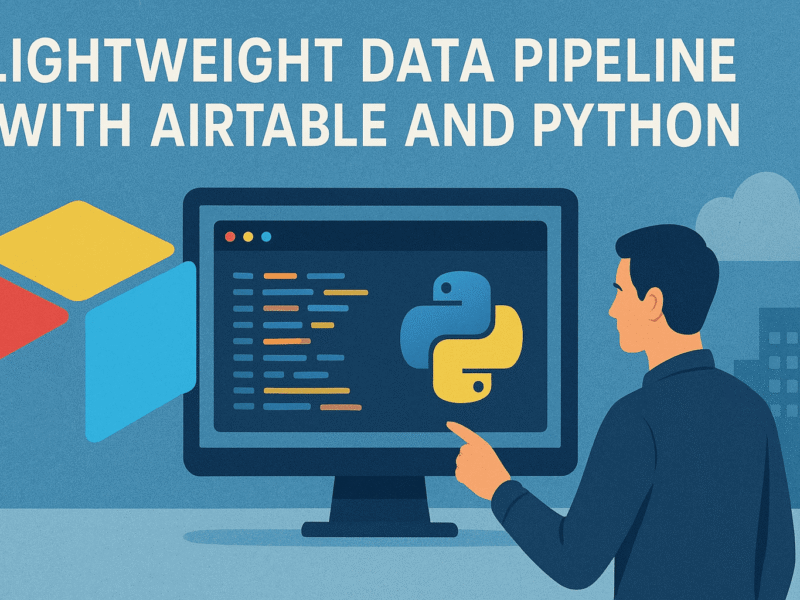GenAI has been in the limelight recently, especially in 2024; businesses have started to reap the significant benefits of incorporating GenAI into their operations. According to an IDC study, GenAI investments are expected to soar to $202 billion by 2028. Despite the buzz, can Generative AI models alone keep your business ahead of the race? The most common answer would be a yes, but in the financial sector, where accurate, reliable data are nonnegotiables, relying explicitly on AI models can be a lost battle.
The financial business world is obsessed with generative AI models; they are used everywhere, from credit scoring risk assessments to everyday tasks. Generative AI has helped businesses improve their operational efficiency and productivity, but they have certain limitations.
What’s holding AI models back?
Generative AI models are great at generating quick, human-like, coherently convincing responses but tend to fabricate responses when faced with queries outside their training data. In that case, accuracy takes a back seat. This is what we call AI hallucinations.
If LLMs rely solely on training data, can we update LLMs with real-time data? If that was your first thought, you’re not alone! Here’s why it could be a less feasible choice. Retraining the LLMs is not only expensive but also resource-intensive. Even if we do, it might be an impractical fix, considering the rapidly fluctuating data.
This is where retrieval augmented generation (RAG) makes a real difference. Unlike traditional generative models, which function only on stagnant pre-trained data, RAG uses a hybrid approach that combines retrieving real-time data and the Gen AI capability to generate human-like responses that are factually verified, eliminating the threat of hallucinations.
Picture this
You are a high-profile investment banker responsible for making sensitive financial decisions. As an investment banker, one of your key roles is to act as a financial advisory body to high-networth individuals. By leveraging RAG, you can generate data-driven insights by combining the records of clients’ past portfolio performances with its ability to pull live market data.
With the above inputs, RAG analyzes trends or patterns in the stock market and presents better investment opportunities. It saves hours of work on market analysis and helps you make data-driven, impactful decisions according to your client’s evolving needs.
Sounds interesting. Curious about how it works?
The RAG architecture has two main elements: a Retriever that extracts pertinent information for the prompted query and a generator that crafts responses using retrieved information.
During retrieval, LLMs look for suitable data from their training datasets; meanwhile, RAG consumes sources such as external databases, search engines, etc. To arrive at contextual intelligent responses, RAG takes a semantic approach by analyzing the history of relevant searches, phrases, and word variations to understand the intent behind the query rather than processing it as a standalone query.
After the retrieval, the task is carried out by the generative models, and they generate responses that are most suitable from the pre-trained and retrieved data pool to best answer a query. Thereby, RAG bridges the gap between generating contextually relevant and accurate data.
Why is RAG a smart move, especially for finance?
Firstly, personalization is one of the core strengths of RAG, as it can calibrate the style and terminologies according to different user requirements. For instance, a deal analysis may require a highly nuanced response filled with jargon. In contrast, stakeholder meetings require a straightforward, high-level summary. Generating context-rich responses creates a sense of personal touch, ultimately increasing user satisfaction.
In a fast-changing industry like finance, it is very important to instill trust to maintain the company’s reputation and long-term client relationships. Unlike traditional AI models, RAG cites source links, allowing clients to recheck data relevancy and build trust.
Proprietary data = powerful asset
According to financial experts, proprietary data is RAG’s biggest flex, which could aid a company in gaining a competitive edge. A company’s proprietary data includes exclusive information such as customer transaction histories, risk profiles, credit scoring models, and client service interaction logs. Since RAG consumes this defined data repository, it can even help develop innovative and specific financial products tailor-made per client aspirations. RAG’s focus on proprietary data allows companies to tap into nuanced insights and competitive opportunities that traditional LLMs might overlook.
Additionally, adhering to regulations is becoming more challenging due to ever-changing regulatory standards and stringent policies in the financial world. As RAG retrieves real-time data, financial institutions can align themselves better with current regulatory standards without human surveillance. Incorporating RAG for compliance will save organizations from penalties and help develop a confidence compliance system ensuring goodwill.
Furthermore, risk management is another critical area RAG has proven efficient. To build a risk resilience system, analysts can leverage RAG to identify, assess, and even forecast risk profiles in no time.
Lastly, good customer support continues with responsiveness; it should be accurate and credible. RAG can simplify customer support without human oversight, allowing financial institutions to strategically use their human resources on high-impact tasks.
The flip side of RAG: What to watch for
Amidst the immense capabilities, there are some careful considerations to make while implementing RAG, which include integration with existing systems, significant initial investments in infrastructure, maintaining good quality data, etc. Still, we can rectify these challenges with targeted strategies.
For example, data privacy is at stake as loads of proprietary data are pumped in. Any data breach could lead to regulatory penalties, a bad reputation, etc., In this case, leveraging a robust data processing solution can protect sensitive business data and solve the issue.
The bottom line: RAG for financial integrity
Financial consultants suggest that initiating cross-functional activities can make good use of RAG, as best practices can be shared among different teams leaving no room for data silos, thereby creating a unified experience.
To sum it up, data reliability is everything in finance. Financial institutions can level up their decision-making process with RAG to avoid making costly mistakes due to data inaccuracies. Embracing RAG is a step closer to streamlined financial operations and sustaining data integrity when using Generative AI for business functions.

